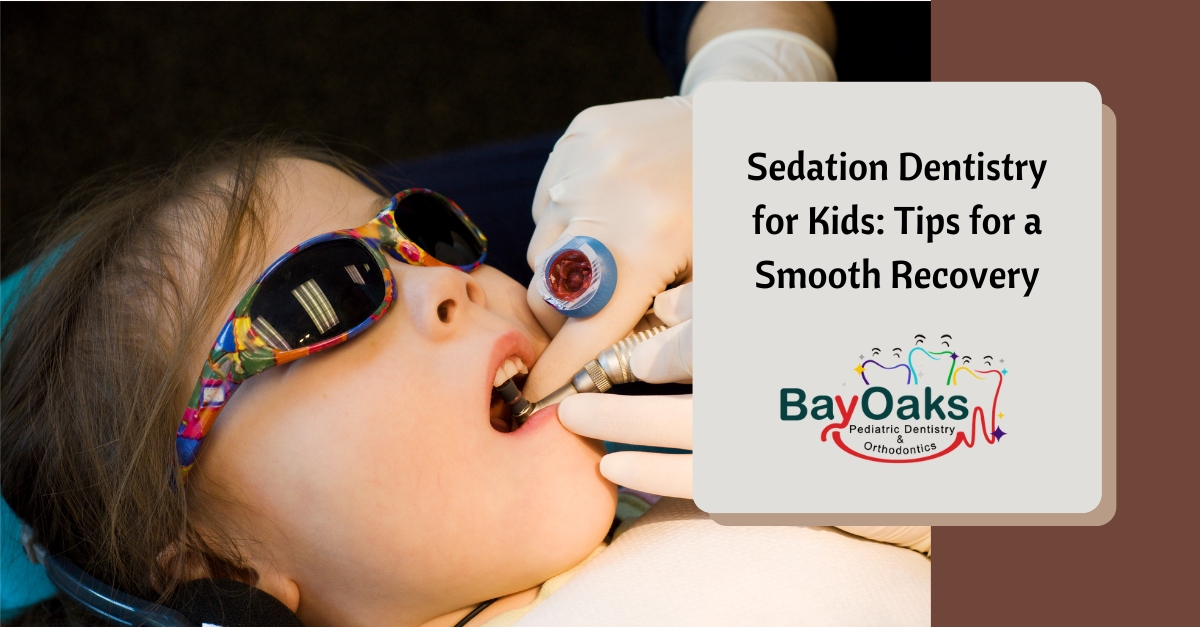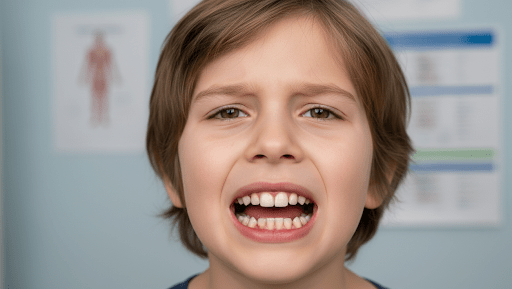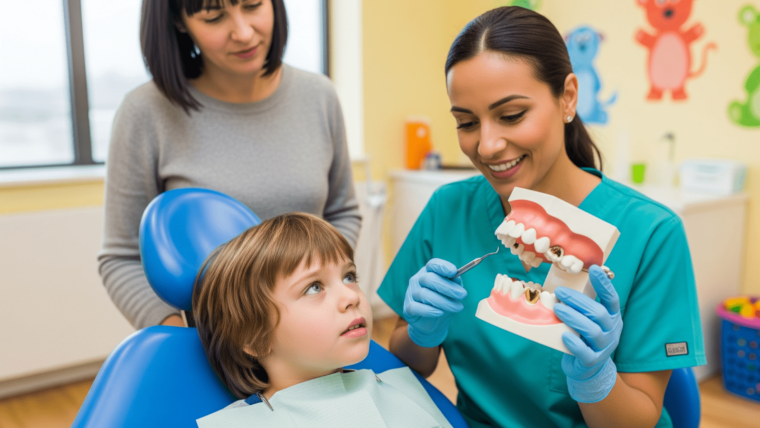
Sedation Dentistry for Kids: Tips for a Smooth Recovery
Sedation Dentistry for Kids: Tips for a Smooth Recovery
Taking your child to the dentist is not always an easy task, especially if your little one feels nervous or scared. For some kids, going to the dentist can be a real challenge, especially if they need a more involved treatment. That’s where sedation dentistry can make a big difference. Sedation dentistry uses special medication to help your child feel calm and relaxed during their visit, making dental treatments easier and more comfortable for them.
If your child is going to have dental sedation, it’s natural to wonder what happens after the procedure. What should you expect? How can you make sure your child recovers smoothly? We’ll go over everything you need to know about sedation dentistry for kids and share tips for a smooth recovery afterward.
What is Sedation Dentistry?
Sedation dentistry helps kids (and adults) feel calm and relaxed during dental treatments. It’s especially helpful for children who feel anxious or afraid at the dentist. Whether it’s for a routine cleaning or a more complicated dental procedure, sedation can make the experience less stressful for your child.
There are several types of sedation, and your child’s dentist will choose the best one based on their needs:
- Nitrous Oxide (Laughing Gas): This is a mild sedative that helps your child feel relaxed during the procedure. It works quickly and wears off right after the procedure.
- Oral Sedation: Your child takes a pill or liquid before the appointment to help them feel drowsy and calm. This sedation lasts a little longer than laughing gas.
- IV Sedation: For longer or more complicated treatments, the dentist may give sedation through an IV. This will keep your child relaxed or even asleep for the procedure.
- General Anesthesia: In some cases, your child might need general anesthesia, especially if they need more complex dental work. This puts them into a deeper sleep during the procedure.
Each type of sedation works in different ways, and your child’s dentist will talk to you about which one is best.
Why Sedation Dentistry is Helpful for Kids
Many children are afraid of going to the dentist, and some may even have a fear of pain. When kids are nervous or scared, it can make things harder for both the child and the dentist. Sedation dentistry helps kids relax, so they don’t feel as anxious, and it can make it easier for the dentist to do their work.
Sometimes, sedation is also needed for kids who need several dental procedures done at once or who might be uncomfortable sitting still for long periods. It helps ensure the procedure goes smoothly and your child stays comfortable throughout.
How to Help Your Child Recover Smoothly After Sedation
Recovery after sedation dentistry is usually straightforward, but there are a few things you can do to help your child feel better quickly. Here are some tips for a smooth recovery:
1. Follow the Dentist’s Aftercare Instructions
Your child’s dentist will give you specific instructions for aftercare, such as when your child can eat or drink, what kind of foods to avoid, and when to give pain relievers if necessary. Be sure to follow these instructions carefully to ensure your child heals well.
2. Watch for Common Side Effects
After sedation, your child might feel a little groggy, dizzy, or even nauseous. These effects are usually temporary and should go away as the sedative wears off. Some kids may feel sleepy for a few hours after the procedure, which is normal. If your child is feeling unwell, try to give them water or clear liquids and let them rest.
If your child has any unusual symptoms or if you’re concerned about how they’re feeling, don’t hesitate to call the pediatric dentist.
3. Encourage Rest
After the procedure, your child will likely feel tired or a bit out of it. Make sure they get plenty of rest. They may need to sleep for a while to fully recover from the effects of the sedation and the dental work.
Create a quiet, comfortable space for them to relax, and let them rest for as long as they need.
4. Offer Soft Foods and Keep Them Hydrated
Your child may need to stick to soft foods for a day or two after sedation. Things like yogurt, applesauce, or mashed potatoes are good options. Avoid hard, crunchy, or chewy foods that could irritate their mouth or make them feel uncomfortable.
Make sure your child stays hydrated. Offer plenty of water or clear liquids right after the procedure, and gradually reintroduce other foods as they start feeling better.
5. Keep an Eye on Pain or Discomfort
If your child had a more involved procedure, they might feel some pain or discomfort afterward. This is especially common if they had teeth removed or needed other major work done. Over-the-counter pain relievers, as recommended by the dentist, can help with any discomfort.
If your child seems to be in a lot of pain, or if the pain doesn’t get better with the medication, contact the dentist for advice.
6. Avoid Using Straws
After the procedure, it’s important that your child doesn’t use a straw for the first 24 hours. The suction from a straw could cause blood clots in the mouth to loosen, which could delay the healing process, especially if your child had any extractions done.
Encourage your child to drink from a regular cup instead.
7. Watch for Behavior Changes
After sedation, some children may act a little differently than usual. They might be a bit emotional, tired, or irritable. This is completely normal and usually wears off after a few hours.
Be patient with your child and offer comfort. Let them know it’s okay to feel a little out of sorts for a while, and they’ll feel better soon.
8. Let Your Child Return to Normal Activities Gradually
Once your child is feeling better, they can start getting back to their normal activities. However, try to avoid any physical activities, sports, or running around for the first couple of days. Let your child ease back into their routine as they regain their energy.
9. Don’t Forget Follow-Up Appointments
Depending on your child’s procedure, the dentist may want to see them for a follow-up visit to make sure everything is healing properly. Be sure to keep any scheduled appointments, and don’t hesitate to reach out to the dentist if you have any concerns.
Sedation dentistry can be a wonderful option for children who feel nervous about dental visits or need more complex dental work. It ensures your child stays calm and comfortable, making the entire experience less stressful for both you and your little one.
While sedation is generally safe, it’s important to follow the recovery tips and care instructions provided by your child’s dentist. This will help ensure your child heals quickly and has a smooth recovery.
If you’re considering sedation dentistry for your child, talk to your dentist about your concerns. They’ll be happy to explain the process, answer your questions, and make sure you feel comfortable every step of the way. With the right care and guidance, your child’s dental experience can be stress-free, and their recovery can be just as smooth.


